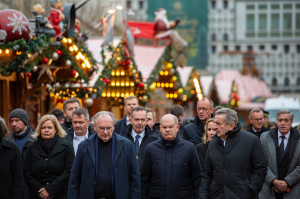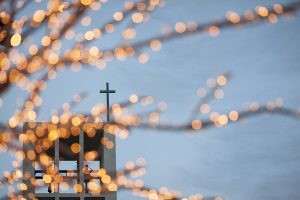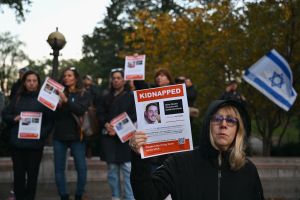Armenian church, village ‘erased’ in Nagorno-Karabakh by Azerbaijani authorities

Caucasus Heritage Watch has released images that reveal the recent demolition of St. John the Baptist Church, a 19th century structure in Nagorno-Karabakh’s Susa area, and the razing of a village known in Armenian as Karintak. The church and village, both with significant Armenian heritage, were under Azerbaijani control after Baku captured Susa from ethnic Armenian forces in November 2020.
The Armenian-built church in Susa, dating back to the 19th century, was taken over by Azerbaijan. It was wrapped in scaffolding for most of the time it was under Azerbaijani control, suggesting ongoing construction or restoration. But satellite images from Caucasus Heritage Watch show that the church was demolished during the winter of 2023-24, reported Radio Free Europe/Radio Liberty.
Located just 2 kilometers (roughly 1.2 miles) south of the demolished church, the Karintak village, known as Dasalti in Azeri, was also razed to the ground. Satellite images released this month show that the entire village was destroyed. A large mosque is now under construction on the site, where the church was previously visible to the right of the new construction.
Azerbaijani President Ilham Aliyev visited the construction site of the new mosque in the razed village, indicating the ongoing transformation in the area, according to RFE/RL. In contrast, Azerbaijani Parliament Member Jala Ahmadova had in July 2021 posted images of a prayer session inside the St. John the Baptist Church on Twitter to demonstrate an “atmosphere of ethnic and religious tolerance.” However, satellite images suggest a different narrative with the church’s demolition and the village’s razing.
Husik Ghulyan, a lead researcher at Caucasus Heritage Watch, who published the satellite images of Karintak, told RFE/RL that the goal of Azerbaijan was to completely demolish the settlement to rebuild a new village for Azerbaijani internally displaced people or other resettlers. Ghulyan also noted that the village’s church was a legally protected heritage site, which is probably why it was left intact during the mosque’s construction.
Lori Khatchadourian, an associate professor at Cornell University and the co-founder of Caucasus Heritage Watch, pointed to a broader pattern of destruction within Azerbaijan’s retaken territory since 2020.
The group has documented the destruction of 10 heritage sites and is beginning a new survey of hundreds of heritage locations.
Khatchadourian suggested that the virtually complete erasure of Armenian heritage in the Azerbaijani exclave of Naxcivan could be a harbinger of what might lie ahead in Nagorno-Karabakh.
Ali Mozaffari, an Iranian academic of Azerbaijani descent, was quoted as saying that this cultural destruction might extend beyond a conflict between Baku and Yerevan. Turkey is spearheading a push to create a unified and connected Turkic World, extending from Turkey to China, where Turkic languages and cultures are prevalent, he said, explaining that heritage plays a crucial role in justifying this geostrategic vision.
From the conclusion of the first Nagorno-Karabakh War between Armenia and Azerbaijan in 1994, most of Nagorno-Karabakh was governed by ethnic Christian Armenians under the Republic of Artsakh, also known as the Nagorno-Karabakh Republic. The governance continued until the Republic’s takeover by Baku in September 2023. Over 100,000 displaced Armenians had to flee the region.
According to the report, Azerbaijani forces have illegally arrested and persecuted Armenian citizens, with prominent figures like Ruben Vardanyan, former State Minister of Artsakh, among those detained. Vardanyan is highly regarded for his contributions to Nagorno-Karabakh and Armenia.
The conflict had deep historical roots, dating back to the early 20th century when the region was part of the Russian Empire and later the Soviet Union. Following decades of sporadic violence, a military offensive by Azerbaijan in 2020 culminated in a large-scale operation to capture the regions of Nagorno-Karabakh and surrounding areas from Armenian control. Despite ceasefires, tensions remained high, with violence and escalating humanitarian crises in the region.
The region was recognized internationally as part of Muslim-majority Azerbaijan even though it had a majority Armenian population.
Switzerland-based human rights group Christian Solidarity International had earlier urged U.S. President Joe Biden to impose sanctions against Azerbaijan President Aliyev for policies of ethnic-religious cleansing.
In its 2023 Persecutors of the Year report, the U.S.-based watchdog International Christian Concern listed Azerbaijan among the top 10 nations most hostile toward the Christian faith.





























